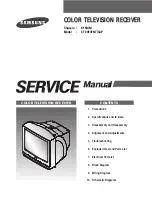
2.3Bleep information
Note: applies to bleep and display version.
The receiver can be called with 7 bleep patterns in 2 different ways
(normal and “cricketed” = intermittent). Normal signals are for
single calls, the “cricketed” signals are for group calls. So 14 different
bleep signals (fig.2) and a silent call (only info) can be selected.
A LED on top of the receiver blinks in the same rhythm as the
bleep.
2.4Display information
Note: applies to display version only.
The LCD displays the address or numeric information.
- ADDRESS
mode
The receiver is in this mode when it has been placed into the
storage rack, or when no call has yet been received after
switching on.
The receiver has 3 programmable addresses, 1 normal call
address and 2 group addresses. Use the RECALL button
repeatedly to scroll the 3 addresses and 2 info message
locations.
The number of horizontal bars in the first digit (fig.3A) indicates
the address level.
When a call is received, the receiver automatically enters the
info mode.
-
INFO mode (5 deep info stack)
The last call remains on the display. A received call without info
code is shown on the display as 5 bars.
Use the RECALL button repeatedly to scroll the info messages
(fig.3B).
-
When the receiver is placed in a storage rack, the receiver
switches to the address mode where only two message
locations are available.
When switching off the receiver the info memory is erased.
3. BATTERIES
3.1
General
1. Battery types
NEVER leave a dead battery in the receiver.
Two LR1 size batteries must be used in the receiver.
Low battery voltage is indicated by a short bleep every 17 seconds;
after 4 hours the receiver is switched off with a high volume bleep.
The receiver also contains a back-up battery to supply the receiver
memory when exchanging the main batteries.
2. Battery saving
When the battery saving mode has been enabled (see 4.1.3) the
receiver is switched on/off by means of the 5F5F pre-amble string.
Battery saving is not possible with the older encoder types LBB
59xx. The encoders LBB 5900/10 and LBB 5840/xx allow battery
saving only via CCC2 and not the 5F5F mode. For more detailed
explanation on the battery saving principle refer to Installation
Instruction 67 par.2.4.2.
3.2 Replacing the batteries
WARNING:
A sticker “Do not open in hazardous area” on the housing
(fig.4C) warns you that the receiver is of the intrinsically safe type.
In this case the batteries may only be replaced outside the
hazardous area and the battery cover must be locked with the
delivered special key at the battery cover bottom (fig.4D).
1. Opening the battery cover
-
Switch off the receiver.
-
Slide the battery cover lock (fig.4B) open in the direction of the
clip.
-
Slide the battery cover (fig.4A) downwards.
-
Remove the 2 batteries (fig.4E).
2. Battery type select switch
Battery type adaptation is done by means of the preset slide switch
(fig.5E) in the battery compartment:
-
middle position “N” when disposable batteries are used
-
down position “CH” when rechargeable batteries are used
-
top position “P” for programming mode only.
3. Replacing the batteries
-
Place the 2 new batteries in the correct position.
If rechargeable batteries are used, be sure the batteries are
charged before using the receiver.
-
Close and lock the battery cover.
4. Switching on
-
Switch on the receiver.
A short single bleep is heard and, if programmed, the receiver is
ready for use.
DP 6000 DIGITAL PAGING SYSTEM
INSTALLATION INSTRUCTION 77
June 1992
Page 2/5
A
B
5-digit display
Bleep pattern























